Walking in the Footsteps of John the Baptist, Part 6
James McGrath has recently traveled to Israel to walk in the footsteps of John the Baptist. I thought it might be of interest that we journey with James as well to discover the early days of Jesus' ministry through his cousin John. Enjoy.
R.E. Slater
August 25, 2022
In the Footsteps of John the Baptist 6:
Ein Kerem and Birthplace and Wilderness of John
by James F. McGrath
August 15, 2022
More highlights from my trip to the Holy Land. I drove to Ein Kerem, which was a village in Jesus’ time but today is a neighborhood in the modern city of Jerusalem. There is a tradition that identifies it as the birthplace of John the Baptist. Based on a second century source (which I will say more about in a guest post on Bart Ehrman’s blog soon) I think there is another possibility that deserves to be considered, one that the early church otherwise conveniently omitted (the first instance of this being Luke’s vague reference to a town in the hill country of Judah). I will have even more to say about this in what I write during the coming year. The trip was not just exploring places with genuine verifiable connections with John the Baptist. Had it been, it would have been a short trip indeed! The wider influence of John and traditions about him are also within the purview of the project and of interest to me.
In Ein Kerem I visited the church that is supposed to be John’s birthplace. Here are some photos of the exterior, interior, grotto, and artwork.
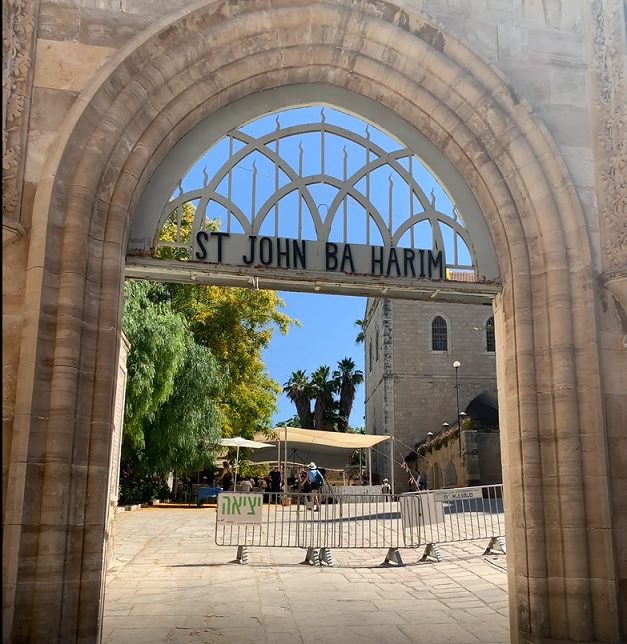
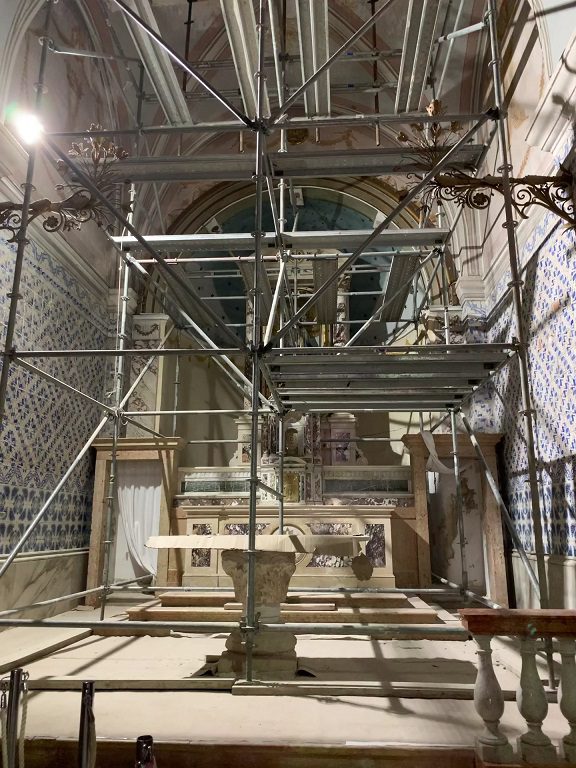
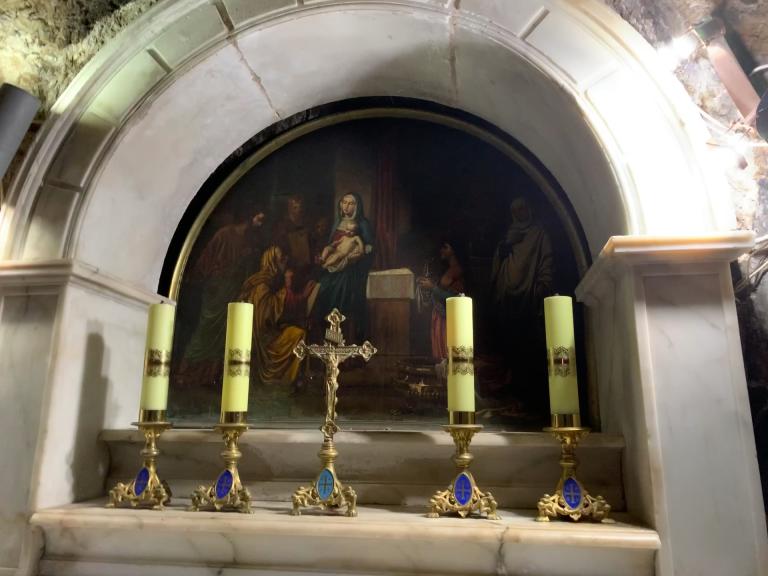
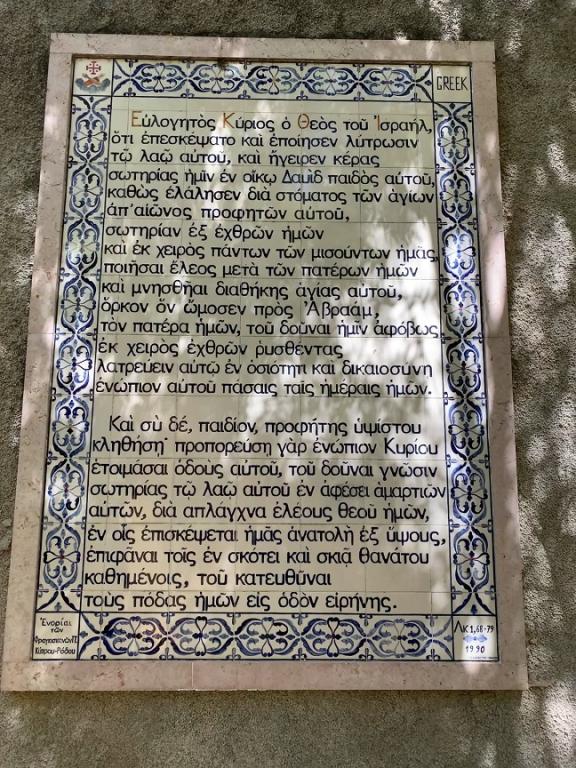
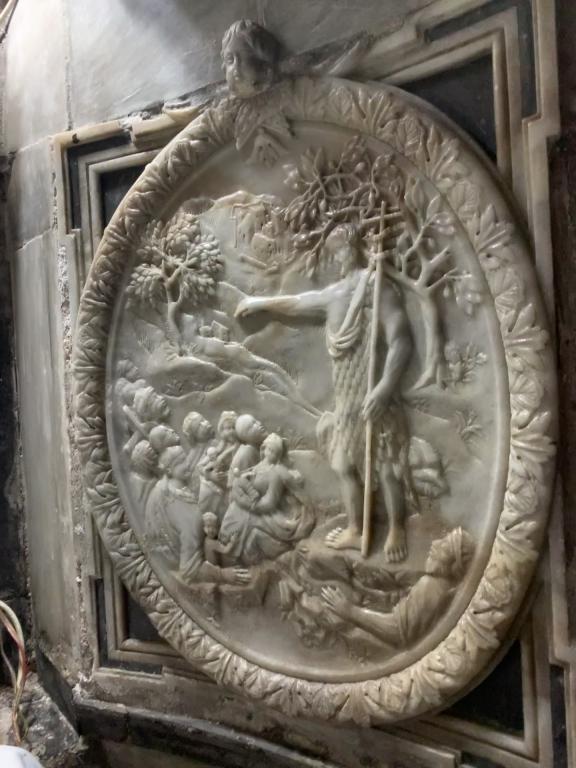
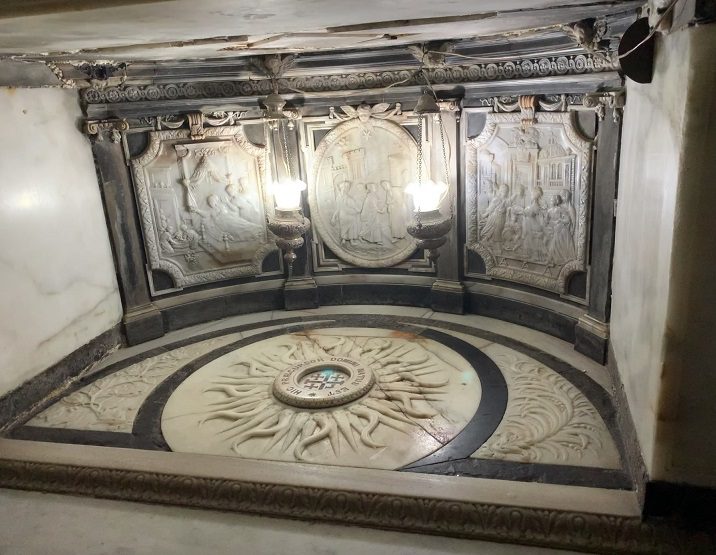
From there I drove to Even Sapir which appeared to be the way to reach the Monastery of St. John in the Desert. It isn’t in the desert, but it is in the wilderness in the sense of the relevant ancient terms (and of course at one point desert in English had more to do with the place being deserted). I will say more about this below in response to a recent blog post by another New Testament scholar. You’ll see from photos that the area is not arid but lush. I am glad that I did not know a more direct route than trying to get there through Even Sapir, since it gave me the unexpected opportunity to ask for directions at the Essene Farm. This is a healthy living commune that is more New Age than anything to do with the ancient Essenes. However, the suggestion has been made that John might have been an Essene at some point, perhaps even spending time at Qumran (which I also visited and will blog about in a future post). That suggestion is about the ancient Essenes, the group whose texts are known as the Dead Sea Scrolls. So I am really happy to be able to say, and to at least try to work into my book on John the Baptist for a general audience, that when I was trying to find St. John the Baptist in the Wilderness, I stopped to ask directions at the Essene Farm. Here are some photos of the monastery grounds, cave, chapel, and artwork from the interior.
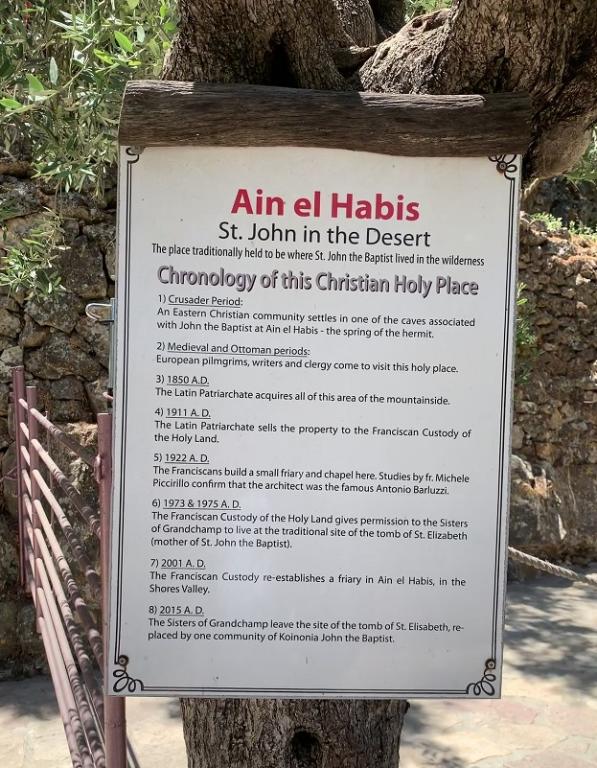
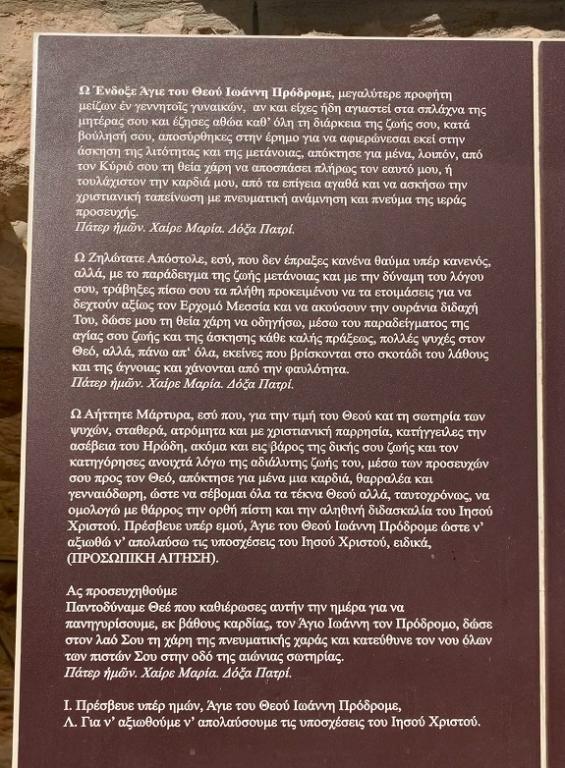
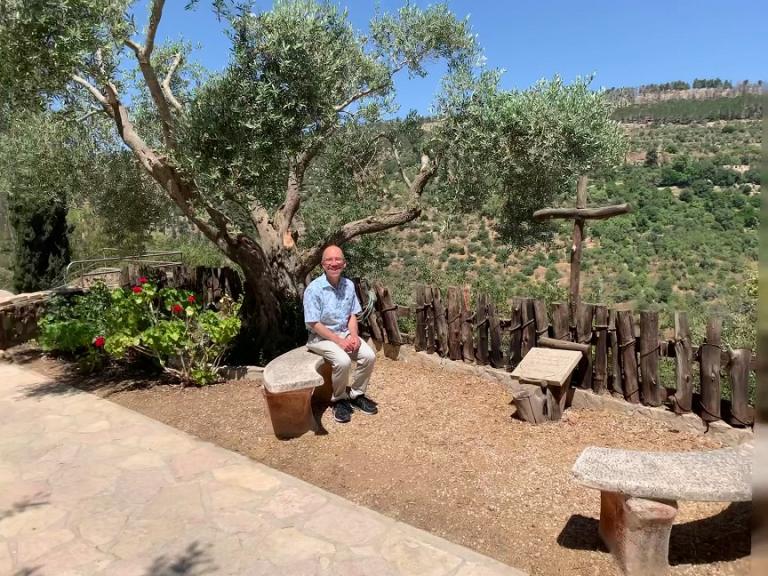
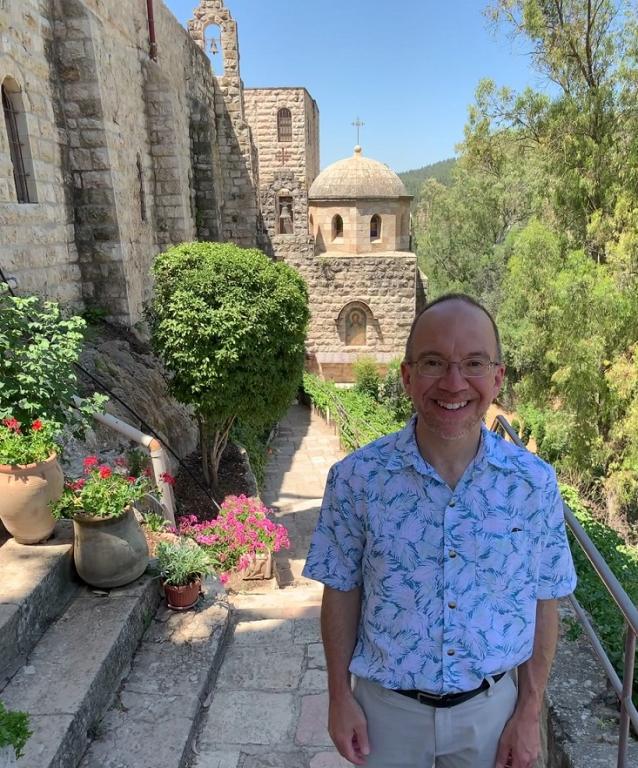
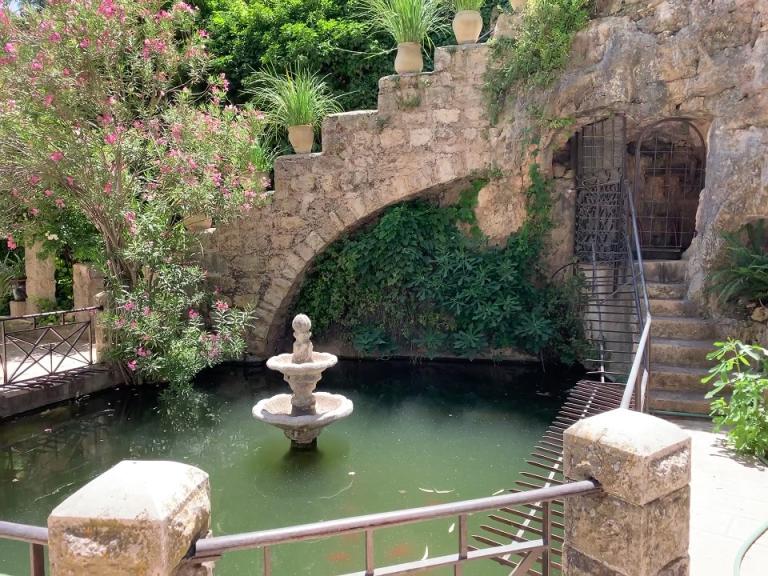
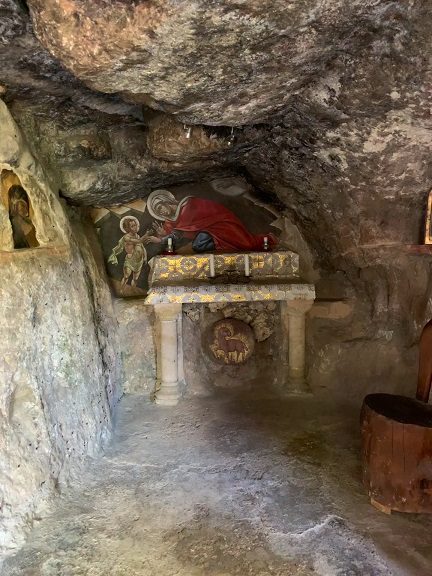
I was particularly struck by the iconography in the hallway inside the part of the monastery that is open to pilgrims and tourists. There are icons of Moses and Elijah, representing the Law and the Prophets. Seen visually it led me to connect something Jesus said about John with something that the Synoptic Gospels say about Jesus. Jesus said that the Law and Prophets were until John, when the Kingdom of God is proclaimed. The Gospels on the other hand depict Moses and Elijah coming to Jesus on the Mount of Transfiguration. Does this story seek to counter what Jesus himself said and have the Law and Prophets be about and until Jesus instead? Here are the photos of the icons I’m referring to. They are modern but nonetheless striking in the way I’ve indicated.
I was also struck by the dove symbolizing the Holy Spirit hanging above the altar in the monastery’s chapel, and thus from the worshipper’s perspective hanging in the air directly over Jesus who is depicted in an icon on the center back wall. There is also a depiction of John in the usual manner holding a staff with a cross at the top and a scroll with some of his words on them, the only one I have seen in which those words are in Hebrew rather than Greek or Latin.
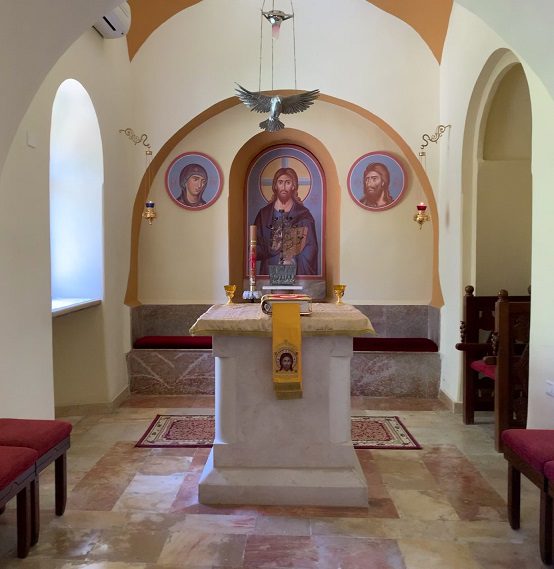
That’s all from Ein Kerem’s Church of St. John and from the Monastery of St. John in the Wilderness. I also visited the Western Wall tunnels for the first time on this trip, where recently a first century mikveh (immersion pool) was discovered. No photos worth sharing of that, but worth mentioning! More photos and commentary will follow. In the meantime, here are some further thoughts about John the Baptist that I have had since returning, and since my last post on the subject.
I have been thinking about the statement in the Samaritan Chronicle of Abu-l Fath that Dositheans prayed while standing in water. Those familiar with the text known as the Life of Adam and Eve will notice the similarity to what Adam and Eve are said to do to express repentance and seek forgiveness after their sin. That same work mentions that a temple will be built, destroyed, and rebuilt, but adds, “At that time, men will be purified by water of their sins. Those unwilling to be purified by water will be condemned.” I wonder whether Life of Adam and Eve might be a Dosithean or a Baptist text, or conversely, might have been an influence on John and/or on his disciple Dositheus.
As you know if you have followed this series (I think), I am wondering about the resonances between Jesus asking about his identity at Caesarea Philippi, which was one of the major sources of the Jordan River if not its primary course, and the response considering John the Baptist as a possible answer. On that see also this recent post by Michael Barber.
I visited Beth Shean on this trip and mentioned John’s activity in its general vicinity, so here is Craig Keener’s recent post about that city.
James Tabor drew attention to the wonderful YouTube video about the Mandaeans’ baptismal practice by Jesse Buckley, with lots of input from his mother Jorunn Buckley who has long been the leading scholar of Mandaeism in our time.
Yung Suk Kim criticized translations which say that the shepherd who went seeking his lost sheep left the other 99 sheep in pastureland rather than the desert. I think it is important to recover the sense that the word we translate most often as wilderness did not mean desert in the specific sense of that English word but rather something more like a deserted place. The English words hermit and hermitage derive from the Greek word in question and hermitages are away from centers of population but are often in areas that are anything but arid.
John the Baptist Series by James F. McGrath

No comments:
Post a Comment